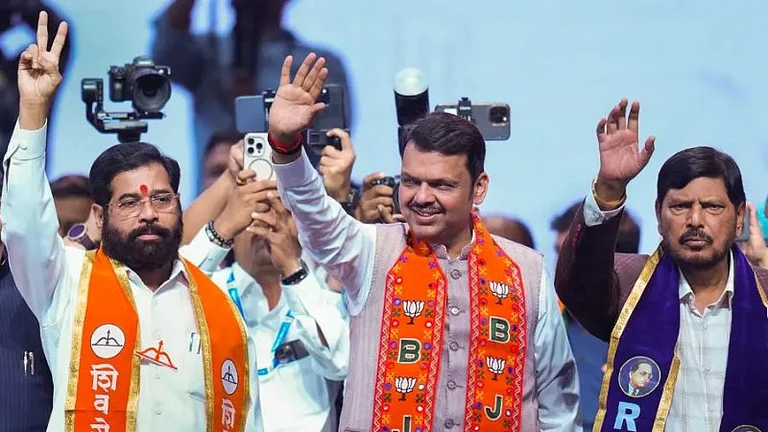In 2007, Mattias Loundberg, a senior economist at the World Bank, illustrated how a growing population could be harnessed into economic growth through the example of four Asian countries of Hong Kong, Singapore, South Korea, and Taiwan — the East Asian Tigers. A quarter of the economic growth of these countries was due to the demographic dividend, Loundberg said.
The economist attributed the successful absorption of the “boom generation” into the work force in these countries to strong education and broader health systems, combined with more liberal trade regimes and enabled national economies.
Loundberg, however, also cautioned that while demographic dividend should be recognised as an opportunity and not a burden, the positive economic effects of the demographic dividend were by now automatic. For instance, Latin America’s youth population also peaked in 2005 and yet the economic growth similar to that of the East Asian Tigers did not materialise.
The India Story
While a lot has changed in the global economy since and the East Asian Tigers may not compare to the massive size and scale of India, some lessons remain pertinent.
With India, having 68 per cent of the people in the 15-64 age group, surpassing China as the world’s most populous country, experts are once again debating the pros and cons of a high population in a country where several politicians have gone as far as proposing a two-child norm with punitive measures to arrest the growth in numbers.
Indeed, a growing population adds more pressure on key resources such as land, water, food, and energy and brings additional challenges to the government. But it also brings opportunities for economic growth if certain factors are capitalised on in a time-bound fashion, say demography experts.
The success of the East Asian Tigers is a good example of how “demographic bonus reaped benefits”, says Srinivas Goli, Associate Professor at the International Institute for Population Sciences (IIPS), Mumbai, and researcher in demography.
Rajesh Raushan, Assistant Professor at the Indian Institute of Dalit Studies, however, says that India’s next-door neighbour China is the best example of how a high young population was provided employment skills. The skilled labour force played a role in the fast economic growth of China, says Raushan.
Capitalising On The Young
According to the latest United Nations Population Fund (UNFPA) report, 25 per cent of India’s 142.86 crore population is in the age group of 0-14 years, 18 per cent in the 10 to 19 age group, 26 per cent in the age bracket of 10 to 24 years, 68 per cent in 15 to 64 years age group, and 7 per cent above 65 years.
India’s large young population is an asset and has a huge potential to contribute to the national economy and country’s development, argues Poonam Muttreja, Executive Director, Population Foundation of India.
“Skilled Indians are in great demand. The opportunity is growing for India to become a source of skilled workers and professionals,” she says.
For instance, in January 2021, India and Japan signed a Memorandum of Cooperation on a Basic Framework for Partnership for Proper Operation of the System pertaining to “Specified Skilled Worker” on information sharing and consultation for ensuring smooth and proper sending and accepting of specified skilled workers.
Muttreja, however, adds that the country needs to make investments in the health, nutrition, education, skilling, and employability of this large young population in a time-bound manner.
“In a changing job market which is tech-driven, Indian youth need to have access to new-age education and benefit from it,” she says.
Goli too concurs that if we look at the demographic structure of the population, especially the age —with a larger number of supporting population than dependent population— it is a boon for India. But how far the county translates this opportunity into an economic dividend depends on some factors such as employment, education, health, and governance.
While in the education and health sectors, we may not be performing our best, we are fairly progressing, says Goli. The real challenge would remain employment, especially in a scenario where automation, mechanisation and technology are dominating the labour market.
“We need to strike the right balance between these economic policies and figure out between technology automation and labour ability, which one can yield a better employment rate,” says Goli.
Need To Focus On Women, Skilled Workers
Not just unemployment, a growing population may also lead to inadequate access to education and healthcare as well as social inequality, gender inequality and patriarchy. It is equally important to ensure that girls and young women benefit from the progressive changes that are sweeping the world, says Muttreja.
“Given that women form nearly 50 per cent of the country’s population, it is necessary to invest in the ‘gender dividend’ so that more women enter the workforce and contribute to the progress of the nation,” she says.
With a younger and skilled population, the world will increasingly depend on India, the fifth largest economy in the world, for its human resource requirements. The World Economic Forum reports India’s GDP growth as 7 per cent for the last year, making it one of the world’s best performing economies. Capitalising on this opportunity will require India to ensure that its young people are appropriately skilled and that they find decent jobs, Muttreja says.

A Paradox Of Inequality
While a large population brings India scope for skilled workers, it also means a bigger market and more consumers. In the Indian context, it is a paradox of inequality that while expensive iphones are selling like hotcakes in metro cities, over 80 crore poor people—many times the population of any country except India and China—are being provided free ration by the government as part of its welfare politics.
It is true that a larger population means a larger consumer base, but the higher share of such population is not economically capable, having low purchasing power to earn and manage livelihood, says Raushan. There are also inter-regional and intra-regional differences in demography, health, education, and economic development.
States with higher fertility and high mortality are facing challenges in hitting optimum level of health. A large share of such population is marginalised, deprived and underprivileged.
“It is important to restructure programme and policies to enjoy the leverage of demographic opportunity according to state specific demographic shift,” says Raushan.
With a younger and skilled population, the world will increasingly depend on India, the fifth largest economy in the world, for its human resource requirements.
According to the latest National Family Health Survey data, the median age of India’s population is 28 (mean age is 30.84 years), which is young compared to China and other developed countries. With a large share of young population, with regional and state-level differential demographic shift, the service sector has benefitted more than the technology sector, says Raushan.
There are many domains within the service sector which do not need skill and training but time-bound delivery. A good example of this is the expansion of the gig economy. But again, that does not fit the rural economy, points out Raus¬han, stressing the need to skill the youth in accordance with state-specific demographic shift.
Many states, especially southern and selected developed north Indian states, have achieved replacement level fertility with increasing ageing dependent population while many north Indian states still have a relatively high fertility with high dependency of child population resulting in masses of youth population.
‘Neither An Asset, Nor A Problem’
Aashish Gupta, demographer, Marie Skłodo¬wska-Curie Fellow, University of Oxford, argues that India’s future prospects depend most critically on Indian society and the state, rather than whether it is the most populous or the second most populous.
“Fundamentally, our population is neither an asset, nor a problem,” he says. “Rather than thin¬king about the additional gains that we may get from the total sum of people we have, which may be rather small, if at all, we should pay more att¬e¬ntion to the immense gains from human development and improving people’s lives because it matters in and of itself, and not for any other reason.”
Gupta argues that given that people’s lives across the world are so bound together. He hopes the event of India overtaking China would give the rest of the world more reason to pay more attention to what is happening in India.
“This event makes it easier to argue in international fora for more representation, or for a greater say. It is true that given India’s population, it doesn’t have an adequate say in world affairs,” he says.
______________________________________________________________________________________________
This appeared in print as “India Growth Story: The Next Steps”

























